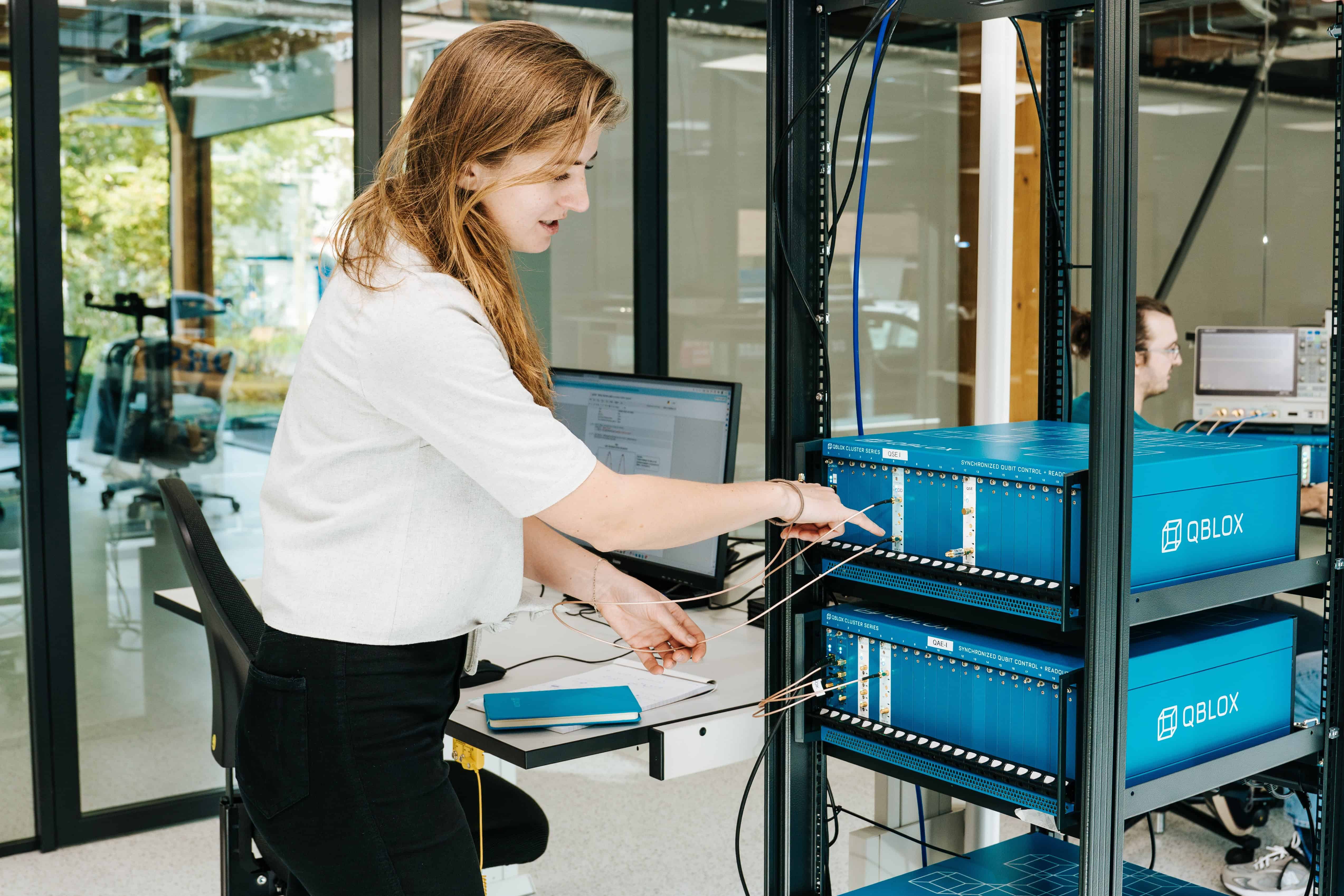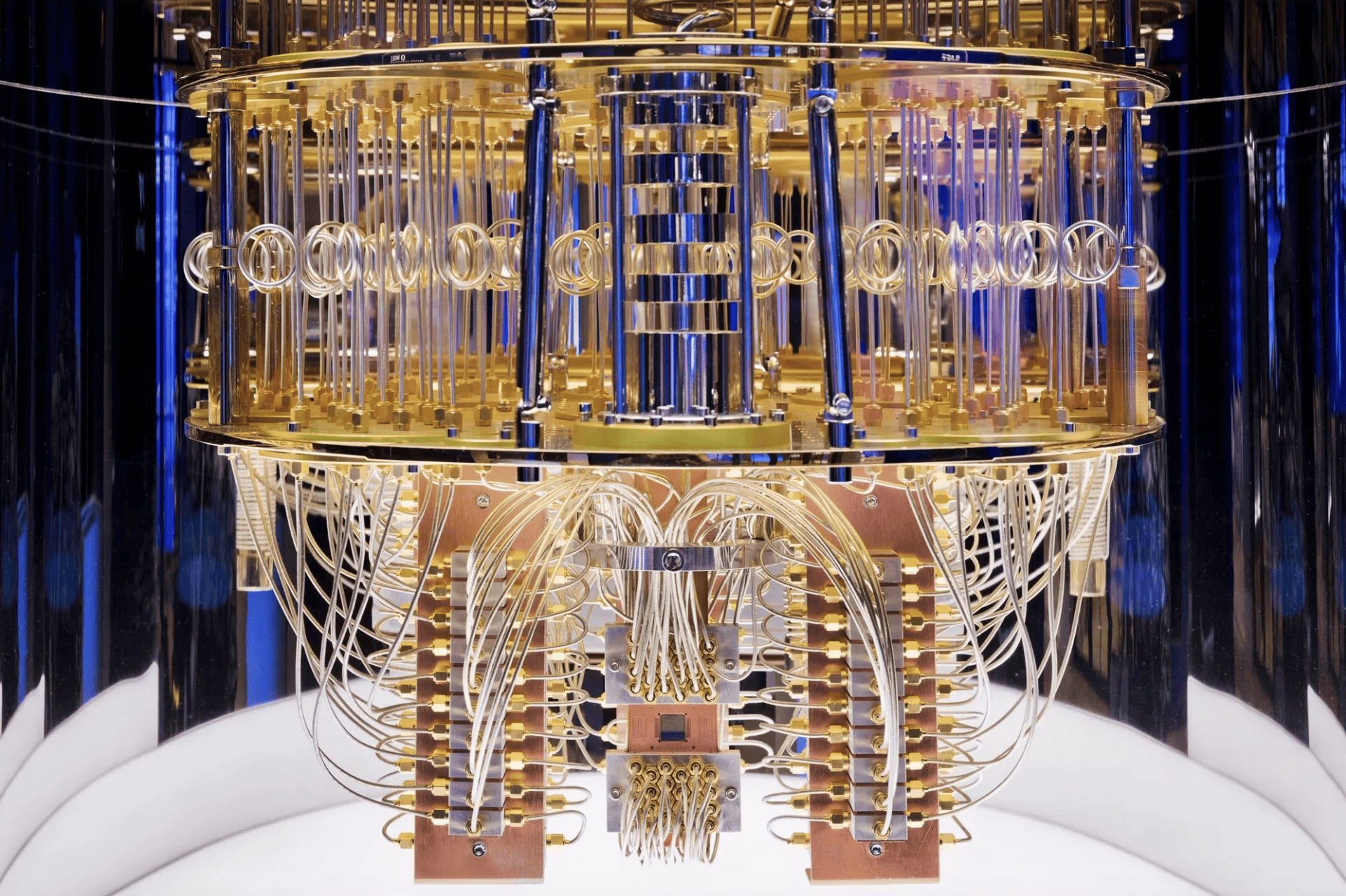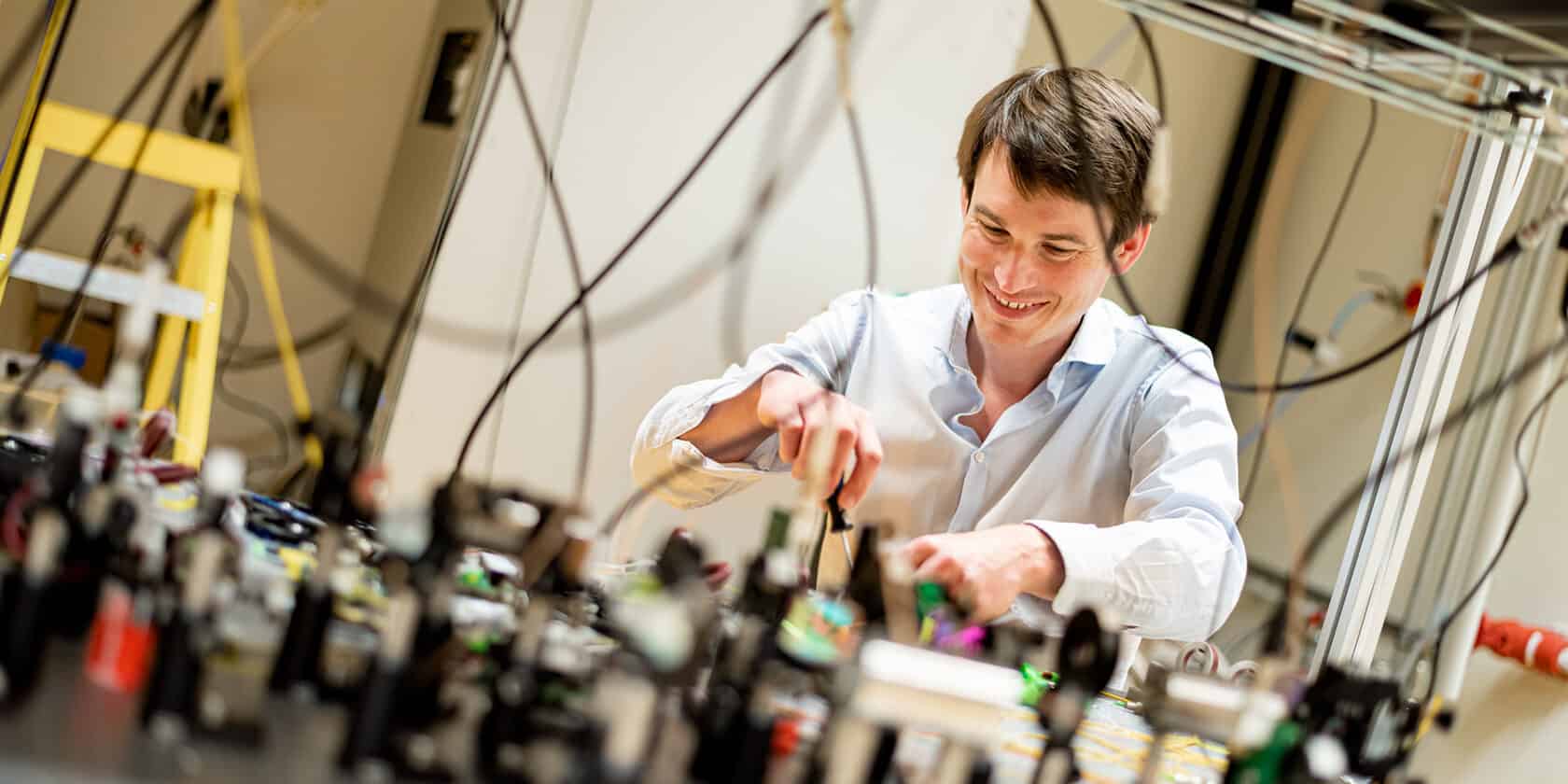
The academic career of Austrian Simon Gröblacher, who has now lived in the Netherlands for almost ten years, is impressive. As a Ph.D. student, he was part of the research group of physicist and Nobel laureate Anton Zeilinger at the University of Vienna and then spent several years at the California Institute of Technology as a postdoc, among others. In 2014, he came to Delft University of Technology (TU Delft), where he has been a professor of quantum physics since 2021.
But his career as an entrepreneur is even more promising. Gröblacher heads start-up QphoX. The products his company develops address two major challenges, the physicist explains. “Classical communication is based on information sharing over optical fiber networks. In the quantum world, quantum computers must also be able to communicate. We are building the hardware that allows quantum computers to connect through an optical network by translating quantum information between different frequencies. Moreover and most importantly, we are also developing hardware that can scale up quantum computers to commercially interesting sizes.”
The promise called quantum physics
Quantum physics brings with it a promise of unprecedented possibilities. Ultimately, against our intuition, tiny particles – the building blocks of everything around us – can be in two places at once.
One of the most promising prospects of quantum technology is the development of a computer that can solve computational problems that even the most powerful conventional supercomputers struggle to solve. Although the applications of quantum mechanics are still limited, countries and companies worldwide have already invested billions in the technology. In this story, the Netherlands is playing a pioneering role.
The most significant investment in Dutch quantum technology
The seed that eventually grew into QphoX was planted in 2018. In the spring of that year, Gröblacher brings Rob Stockill, then a postdoc at Cambridge University, to Delft. “Purely out of curiosity,” they begin a research project investigating microwave-to-optical conversion. The results are so promising that they then decided to take their research to the market.
In 2021, Stockill (CTO) and Gröblacher (CEO) co-found QphoX. Three years later, 21 people are on the payroll, and with funding of 8 million euros, they secured the most significant Dutch investment in quantum technology to date. This investment allows Gröblacher to finally refocus on what really matters. “As the founders, we invested a lot of time in organizational tasks, like HR and the financial side. Now we can hire people who are actually good at that and get back to focusing more on the product development itself.”
Breakthrough with optical cables
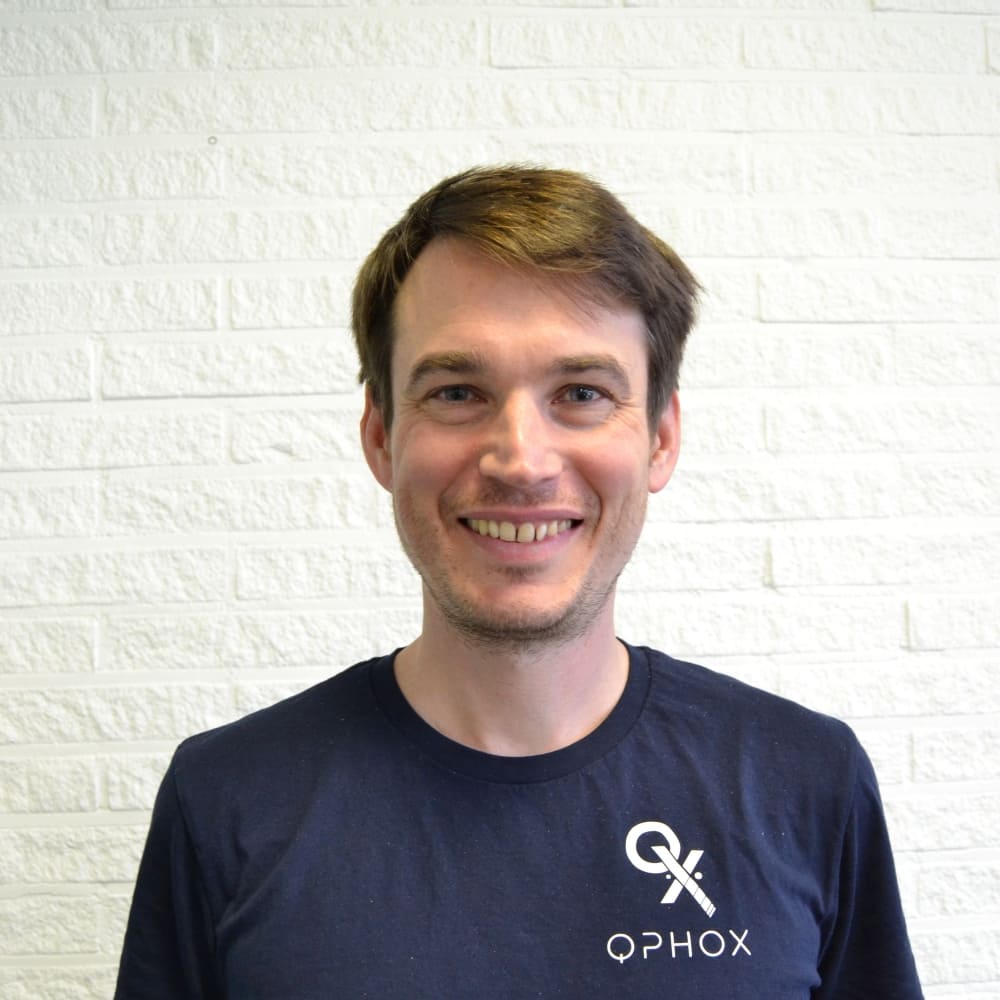
The company has had a couple of significant breakthroughs recently. In October, it demonstrated how its technology can read superconducting qubits (the information unit of a quantum computer) using light signals.
Classical computers can already do many calculations, but some problems are so complex that they need to be simplified for even the most powerful computers. Quantum computers promise to provide solace but can only do their job if they have enough qubits – the building blocks of a quantum computer. The problem is that these qubits are very sensitive to their environment, especially temperature and noise.
Qubits are often controlled through ordinary electrical cables, but this is not ideal. It makes the systems large and limits the size of the system. QphoX plans to switch to optical cables. This would allow many more qubits to be placed in a system and connect multiple quantum computers together to solve the most challenging tasks. The company developed a device that can convert qubit signals from microwaves to light, working very efficiently at the level of individual photons – the smallest particles of light.
At the forefront
As far as Gröblacher knows, QphoX is the only company currently at this stage in their technology maturity. “Of course, related research is being done at several universities. But no company is currently at performance level as we are, so we will certainly have an edge.”
Developing a support system around quantum scale-ups is essential to maintain that lead. “At the moment, there are no quantum scale-ups in the Netherlands yet. There are more and more big high-tech companies investing in quantum, though, so it’s getting better, but that’s my biggest concern about building a quantum technology company in the Netherlands – and Europe. We are ahead of the United States and Asia now, but we must maintain that position. Many companies are moving to America because more funding is available there.”
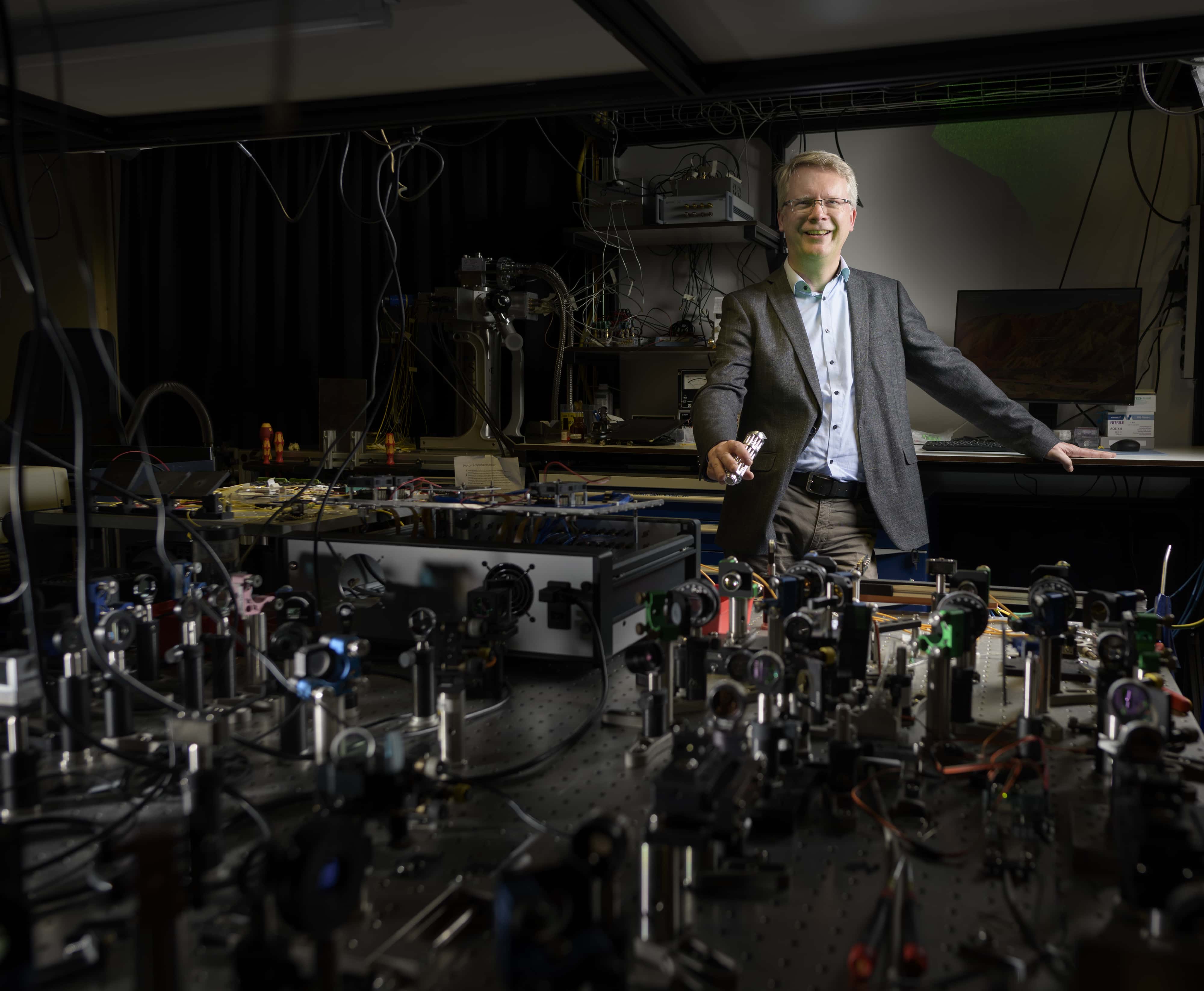
Classic VS new generation
At the beginning of his entrepreneurial adventure, Gröblacher envisioned entering the market only with a perfected final product. He has since re-evaluated this approach, and the first product brought to market by QphoX will (still) be based on classical signals for quantum computers while already delivering a significant performance boost for quantum computers. Over time, the maturity and performance of their products will be gradually increased. “By entering the market earlier with a product that may not be quite perfect, we can raise money to fund further research,” Gröblacher explains. The product QphoX brought to the market recently – an electronics box to control microwave switches – is a good example of that. It did not exist in the market before, and was developed for the needs of the company.
The difference between these types of signals has to do with how information is transmitted and processed. Classical communication systems use, for example, electric currents or electromagnetic waves (light) to transfer information and are based on the principles of classical physics. In the case of classical computers, bits represent information, where each bit can only have a value of zero or one.
The principles of quantum mechanics are applied to the new generation of signals. Instead of traditional bits, quantum computers use qubits, which can exist simultaneously in multiple states. These qubits can be used to perform complex calculations beyond the reach of classical computers.
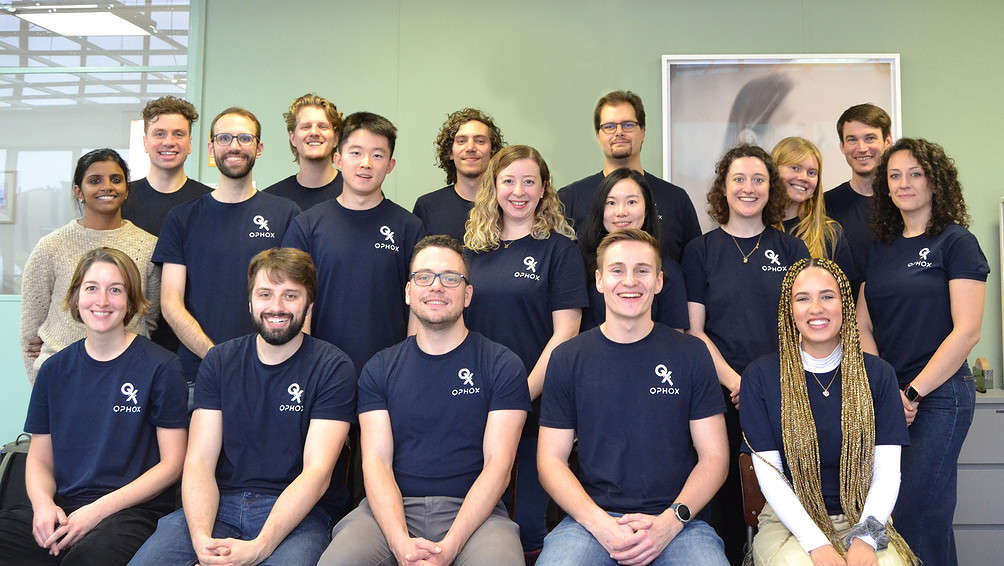
Quick and dirty
Scrolling through the team page on QphoX’s website, one sees a very diverse group of people – especially for a high-tech company. “For a company developing a new product and new technology, this even more critical. You don’t want a team of people who look like you, come from a similar background, and have the same opinions. Instead, you need to hear different perspectives and approaches to build the best product possible.”
For example, the physicist cites the balance between people from academia and people with experience in industry. “I come from academia. My method is best described as quick and dirty: keep trying until you succeed – in a systematic way of course” Gröblacher smiles. “That’s not necessarily always the most targeted or efficient way of working. Finding a middle ground between systematic, organized work and the quick and dirty method has proven to be very important for the development of the technology in our company.”





